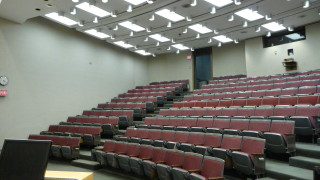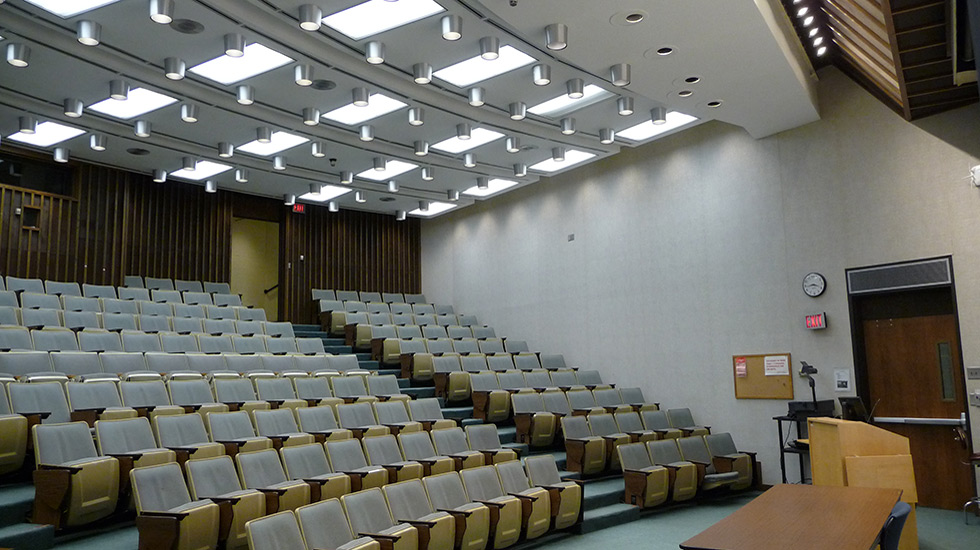New energy efficient lighting was recently installed in the University of Rochester Medical Center. The University partnered with their materials supplier Wesco Distribution and the energy efficiency firm SmartWatt Energy for the initiative. Approximately 300 incandescent light bulbs were replaced with light emitting diode (LED) lighting technology in two large lecture halls, Adolph Auditorium and Upper Auditorium. In the Anderson Conference Room all 29 fixtures were replaced to incorporate LED lighting; 9 – 10 watt bulbs replaced 65 – 300 watt bulbs. The conference room’s fluorescent lighting was updated as well as room’s light dimming switches.

The updated lighting utilizes 75 to 80 percent less energy than the previous lighting system. This is because incandescent light bulbs emit a tremendous amount of heat, while LED light bulbs produce substantially less heat but the same amount of light. As a result, LED bulbs use significantly less energy. In addition, LED lights last 20 times longer than their older counterparts. The project resulted in estimated annual energy savings of $6,000.
Another benefit of the project was that it decreased maintenance costs of an estimated $7,000 per year. Older rooms in the Medical Center had begun to require increasing upkeep, so bringing these classrooms up to date with a stronger lighting system decreased the time required to maintain them. Brian Donald, General Manager of the SmartWatt Energy Rochester office, explained that the company derived an “energy efficient solution that also eliminated [the Medical Center’s] maintenance concerns.” The project was also financially efficient because 50 percent of the funds came from a grant from New York State Electric & Gas Corporation and Rochester Gas & Electric (NYSEG/RG&E).
This initiative was a pilot project at the Medical Center to see how updating the lighting technology in the large lecture halls could benefit the institution. With such a significant environmental and economic payoff, the project could potentially pave the way for future projects.
For now though, the collaborative effort resulted in successful energy efficient changes to the Medical Center. “It was nice to be able to work with the University to save them maintenance headaches and at the same time help them to be energy efficient,” said Donald.

Written by Abigail Fagan, class of 2014
Photos by: Stephen Pettis

